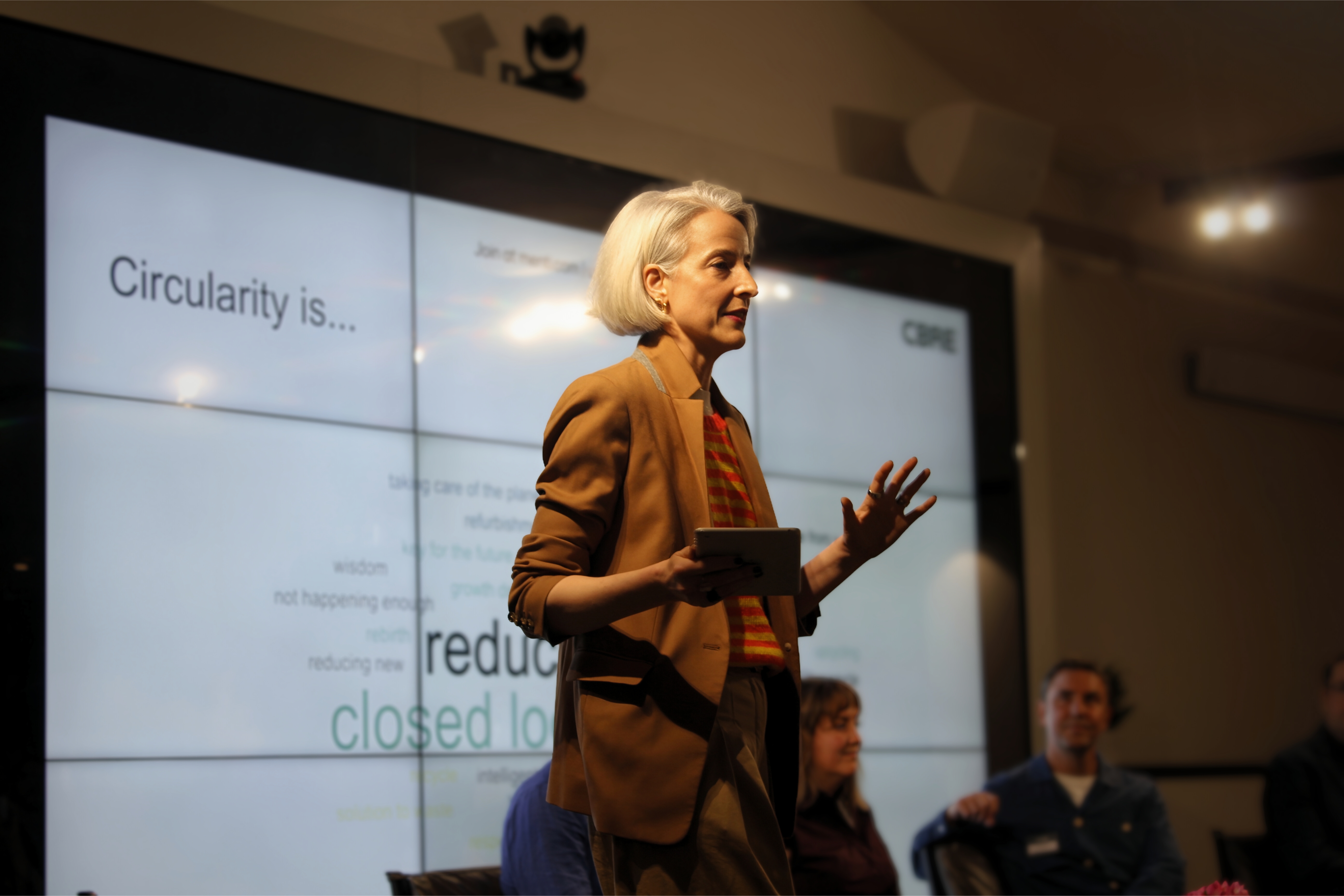News: Circular Economy Week 2025
The construction industry is the owner of one of the many undesirable percentage-based factoids regarding the environment that have slowly slipped into our consciousness over the past decade or so. With DEFRA’s data showing the industry produces a whopping 62% of all UK waste, it goes without saying that a dramatic change is required. Thankfully, there are sections of the industry that agree.
This autumn, the eighth edition of Circular Economy Week returned to London, with more than seventy events celebrating the progress being made towards a low-carbon, circular economy. Delivered by ReLondon and supported by the Mayor of London, the Ellen MacArthur Foundation, Sustainable Ventures, and London & Partners, Circular Economy Week 2025 preceded this week’s COP30 climate summit and ran alongside Circular Cities Week – a global initiative connecting twelve cities around the world in their shared commitment to resource efficiency and waste reduction.

The event brought together policy leaders, zero-waste pioneers and sustainability experts to share insight into the UK’s expanding circular economy. Delegates heard how innovation is reshaping industry practice, from unlocking the value of ‘end-of-life’ materials to reuse schemes for the film and TV sector and new materials made from food waste.
In Designing for Change: Modularity, Materials and Circular Futures, more than sixty professionals from across design, manufacturing, real estate, and government joined to discuss the transition away from linear building models. Moderator Kate Smith of CBRE emphasised that the familiar “build, use, strip out, waste” process no longer works and that reuse, reconfiguration and return must be considered from the very start.

Designer Paul Crofts, of Paul Crofts Design and Isomi, spoke about modularity as a tool for adaptability and longevity, explaining that a reception desk, for example, should be able to grow or shrink as a business evolves. “Designing for disassembly must become standard practice,” he said, “and we must value the innovation and ingenuity it takes to maintain quality through change.”

For Scott Campbell of Surface Matter, material selection sits at the heart of the circular transition. He noted that design choices often seen as purely aesthetic are in fact deeply strategic. “Choosing recycled, repairable and reusable surfaces transforms the entire lifecycle,” he said. Rosie Rainbow of Material Rescue added that successful reuse depends on collective engagement, comparing it to the way Sequoia trees survive through a vast network of interconnected roots that share knowledge and resources.

Closing the discussion, Dominic McAndrew of Design Collective argued that designers and specifiers are now custodians of value. “Embedding reuse into procurement shifts circular design from waste reduction to value protection,” he explained, “lowering lifecycle costs and future-proofing assets.”
The evening session Why Materials Matter: Unlocking Value Through End of Life, chaired by Sophie Thomas OBE with panelists Ross Dight of Tarkett, Scott Campbell of Surface Matter, and Molly MacAulay Overbury, delved into what happens to materials once they leave active use – a stage often overlooked in the circular conversation. Thomas opened by framing the issue: despite growing awareness, global recycling rates have fallen to just 6.9%, according to the 2025 Circularity Gap Report. The challenge, she explained, lies not in reduced recycling performance but in ever-increasing production.
Panelists discussed the growing urgency to address end-of-life value recovery across the built environment. Recent government initiatives such as Part Z, Producer Responsibility, the Right to Repair, and WEEE Directives were praised as encouraging steps, but collaboration between clients, developers, manufacturers, and contractors remains crucial. Practical measures, such as issuing a “letter of comfort” when a manufacturer cannot provide a warranty for reused goods, were discussed as ways to overcome existing barriers to reuse.

Campbell questioned the industry’s attachment to warranties, noting that most claims occur within the first year of use and that the perceived risk of reuse is often overstated. He also challenged the idea that storage poses a major obstacle to reuse, pointing out that the UK’s extensive logistics infrastructure already supports next-day delivery for countless goods. “If we can store and distribute new products so efficiently, we can do the same for reused materials,” he said.
The discussion concluded with a clear call for change: reuse must become a standard design consideration, not an afterthought. Collaboration between designers, clients, and manufacturers at the earliest stages of a project will be essential to make circularity the norm, ensuring that materials are seen not as disposable commodities but as assets with enduring value.

